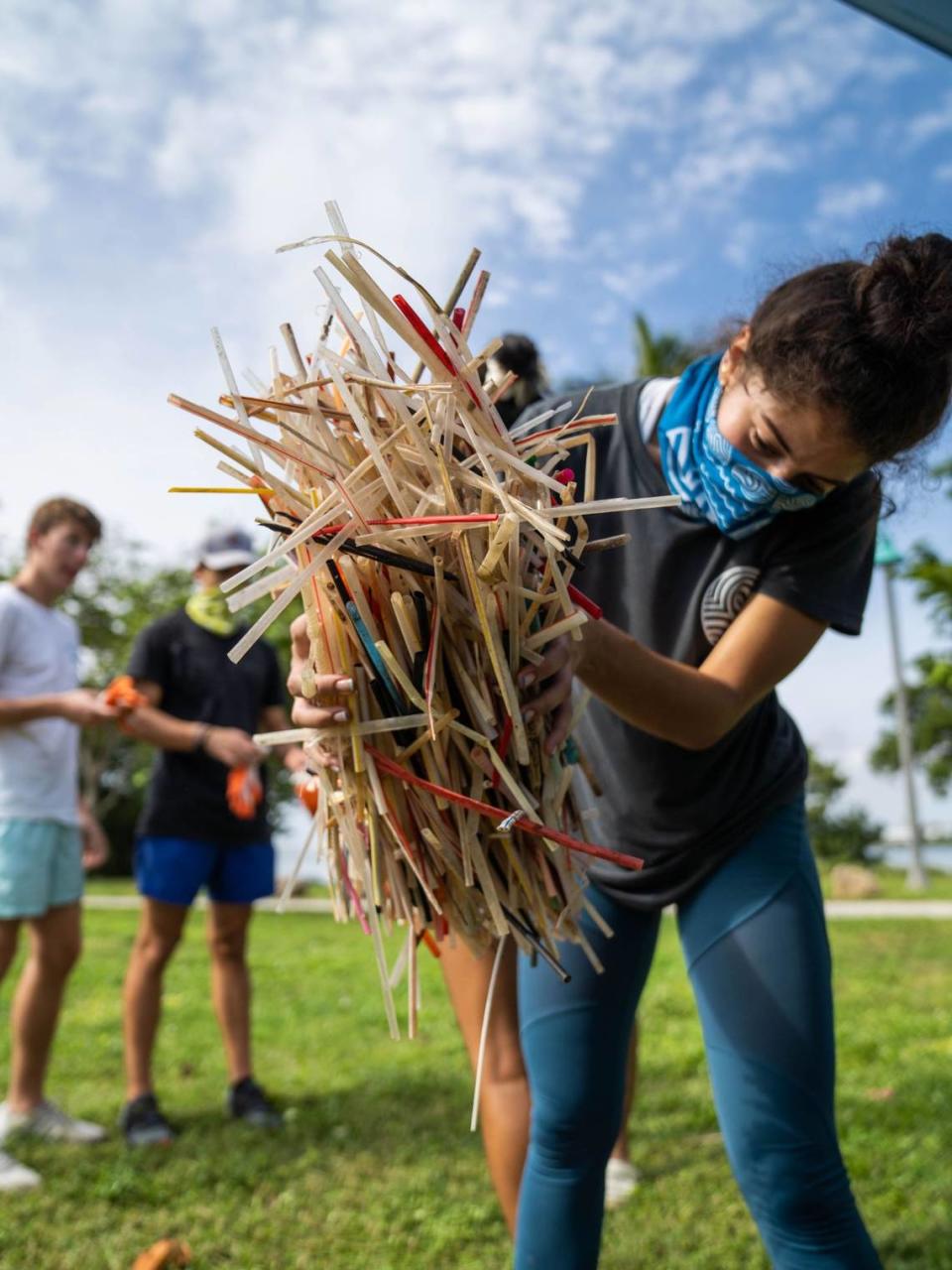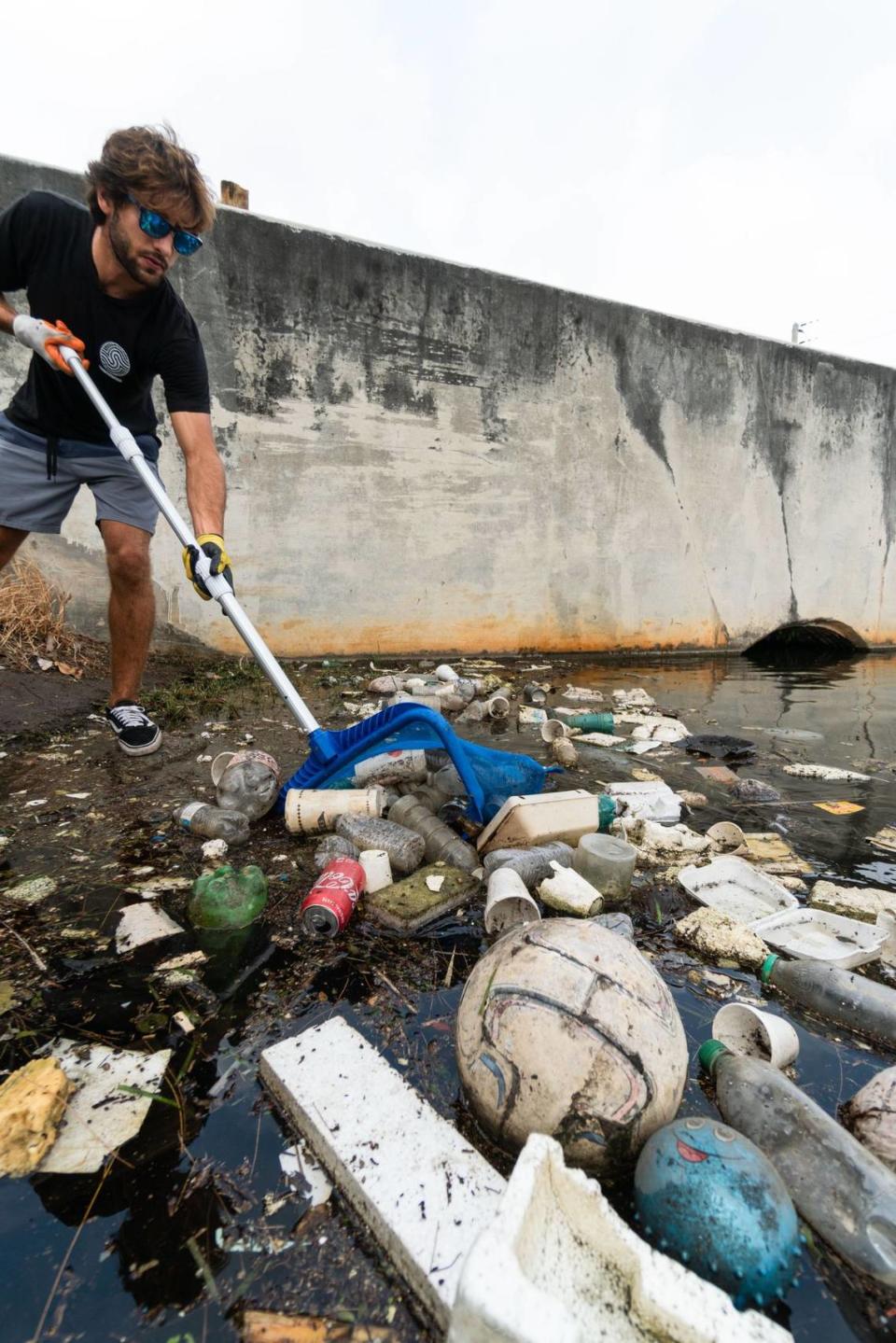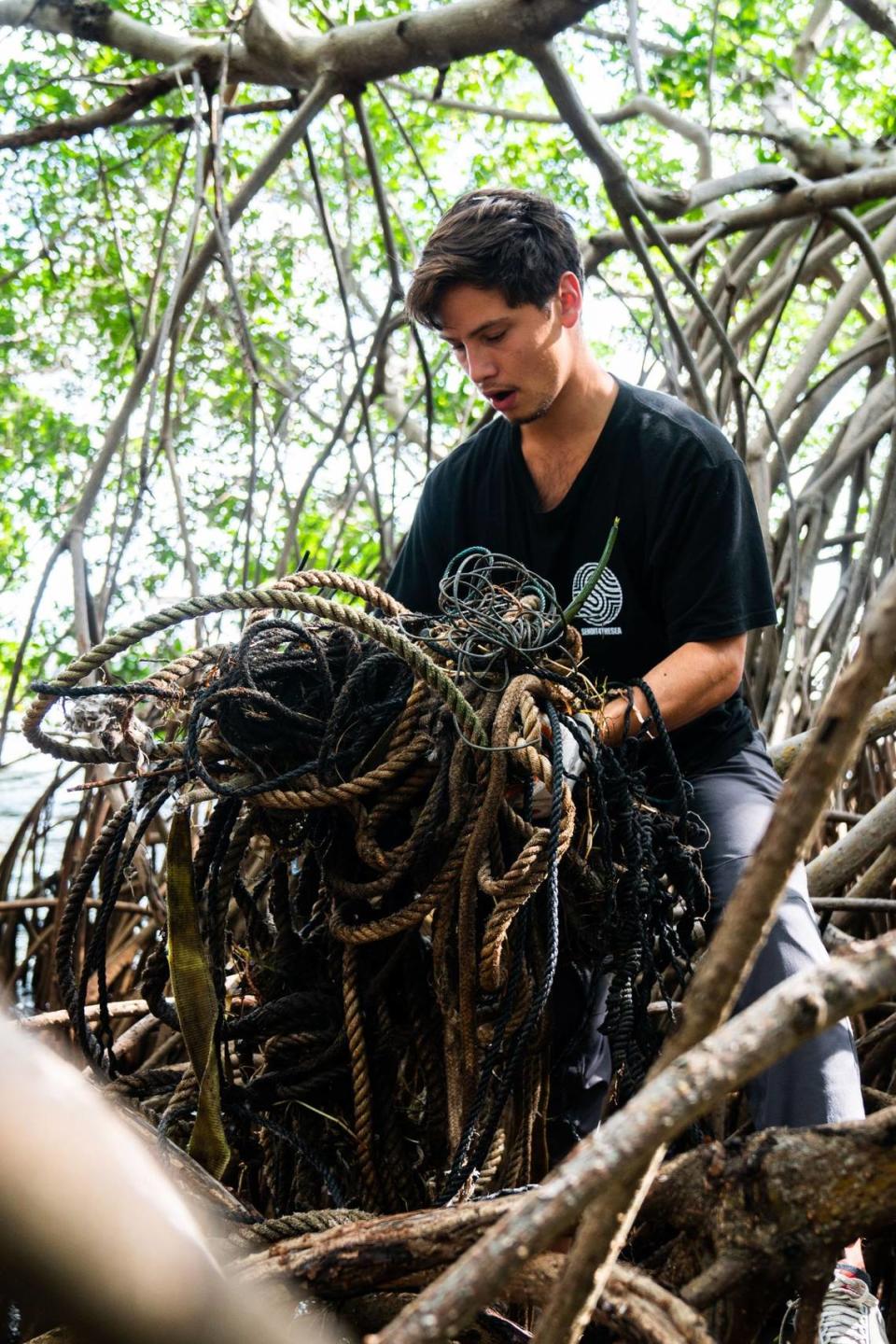Miami’s shores are covered in garbage so these MAST alums are doing something about it
During a surfing trip to Nicaragua in February 2019, MAST Academy alumni, Theo Quenee, 22, and Coby Barreras, 22, who both reside in Coconut Grove, realized that the vast amount of water and shoreline pollution was as common in underdeveloped areas as it was in South Florida.
“We realized that everywhere around the world is facing the same problem, no matter what type of infrastructure there is,” said Quenee.
“When we came back, we wanted to continue the clean-up efforts that were happening here locally,” he said.
He and Barreras started the environmental non-profit Sendit4thesea in April of 2019.
Since then the group’s volunteers have picked up around 36,000 pounds of trash doing shoreline clean-ups.
“We really wanted to engage the younger people in Miami to come out, so that’s what led us to start Sendit4thesea,” said Quenee, who works as a freelance photographer and videographer.
A Ton of Trash in a Day
Prior to the Covid pandemic, Sendit4thesea held clean-ups every single weekend – now it’s twice a month.
Each clean up usually brings together 70 to 80 volunteers but for bigger clean-ups, like at Bayfront Park, as many as 500 volunteers have shown up, says Quenee.
He says that December 29, 2020 was the day that volunteers picked up the most amount of trash at a clean-up: 2,477 pounds at Bayfront Park, over a ton of garbage.

Once they sorted out all of the trash they counted 11,514 bottle caps, 6,725 straws and 1,635 plastic water bottles, among other single-use plastic items.
“I think that everything we do has an impact,” says Quenee.
“Whether it’s your packaging as a restaurant owner if you’re creating waste through your take-out goods. Maybe it’s a jet ski rental company that’s not teaching their clients about what to do or what not to do when you’re in a seagrass bed,” he says.
“I think if everyone was just a little bit more conscious about Biscayne Bay and took the extra five minutes to relay the message, Miami would be very different.”
Using Social Media to Appeal to Youth
Quenee says that social media, especially Instagram and TikTok, has been helpful in building a following for clean-up events.
“We try to put out pieces that are educational, informational or inspirational in a way to get people out and active,” he says of the non-profit’s social media posts.
Photographs on their Instagram page show volunteers hauling large pieces of debris stuck in mangrove roots, containers full of discarded colorful bottle caps, and scenes from their clean-ups.
Quenee also recently launched a “Create to Educate” series on the non-profit’s Instagram page, where a creative person who is impacting the environment in a positive way is featured, such as a surfer who creates surf boards using recycled materials.

“In a matter of changing a whole community like Miami, there are so many different people that need to get involved to effectively create a change over this massive city,” he says.
Some eye-opening things volunteers have found during cleanups are a Bacardi bottle from 1963, a message in a bottle and cruise ship ropes that weighed 900 pounds.
“That’s all nylon, which is plastic,” says Quenee of the ropes. “Over time, if that broke apart, that would be 900 pounds of micro-plastics.”
Sendit4theSea Crew and Volunteers
The Sendit4thesea crew consists of about seven core members. Most are former students from MAST Academy and are in their early twenties. Some current students from MAST also intern for the non-profit.
In order to manage so many volunteers at clean-ups, the core crew implements flow-charts of different stations, such as check-in and materials pick-up. Core members then brief volunteers on background information of where all the plastic is coming from and safety protocols to follow when picking up needles and sharp objects.
Salvador Horna, 16, a senior at MAST, who resides in Coral Gables, is a regular volunteer at SendIt4TheSea’s beach cleanups in Bayfront Park and at their mangrove planting project at MAST Academy.
“I loved the experience because I’m helping my community and the environment, while doing fun activities with my friends,” he says.
He says the clean-ups are important for two reasons: “They help the wildlife that is near the coast by removing pollution from their ecosystem, and they give people an awesome opportunity to help the environment and teaches them the importance of dealing with issues like marine pollution.”
He adds that the fun part of volunteering at a Sendit4thesea event is that the organization is very much centered on the youth.
“I personally always go to their events with a friend or two and I always find someone that I know at these clean-ups,” he says.
“They always have fun little activities such as slacklining that allow volunteers to relax after picking up trash. The organizers are very relaxed and understanding, and they will appreciate your effort no matter how much trash you pick up,” he adds.
Volunteers use giant sand bags for clean-ups, which have been reused since the non-profit’s inception, so not to generate more plastic waste in materials.
Gloves are washed after each clean-up, to also reduce the environmental footprint.
Operating costs – for permits, for new materials when needed, for hand sanitizer and educational materials— run the non-profit $8,000 yearly.
Virtual Reality Environmental Education
Sendit4thesea is also hoping to raise funds for environmental education.
They’ve offered PowerPoint presentations at schools in the past about the importance of keeping Biscayne Bay and its surrounding areas clean, but to keep young students engaged, they are looking to step up their game.
The non-profit is hoping to introduce virtual reality presentations showing seagrass beds and mangrove forests around Biscayne Bay to inner-city students through the use of 360-degrees cameras.
“We want to bring the Bay to them and let them experience it,” says Quenee. “That’s something we’ve definitely been looking for funding for.”
The cardboard virtual reality goggles, which would give the students an experience of an online field trip, cost $5 per pair.
Quenee says it can take up to six hours to edit a three-minute video, aside from the time spent on filming the locations, which also adds to the costs.
Mangrove Restoration Project at MAST Academy
Ellie Reyna, 17, of Brickell, is a senior at MAST. She serves as the project lead intern of Sendit4thesea’s mangrove restoration project at MAST.
“The mangrove restoration project entails a group of volunteers constructing three mangrove nurseries, which will then be used to plant and foster propagules (mangrove seedlings),” she says.

After the propagules have grown large enough, they are moved out of the nursery and planted onto the nature trail behind MAST Academy and other areas around Miami that need mangrove replanting, she says.
Volunteers have helped to remove invasive species from the area surrounding the Miami Marine Stadium, as those plants compete with mangroves for space and sunlight.
Reyna says the estimated cost of the mangrove restoration project is $7,000 to $9,000 annually, which covers materials, invasive species removal, and monthly site tours of the nursery.
How to help
Website: sendit4thesea.org
Email: info@sendit4thesea.org
Instagram: @sendit4thesea
To donate to Sendit4thesea, click on the “Donate” tab on their website. The website also lists upcoming clean-ups and ways to volunteer.

